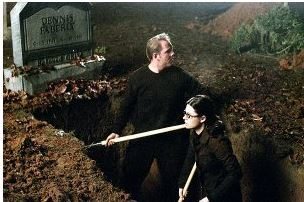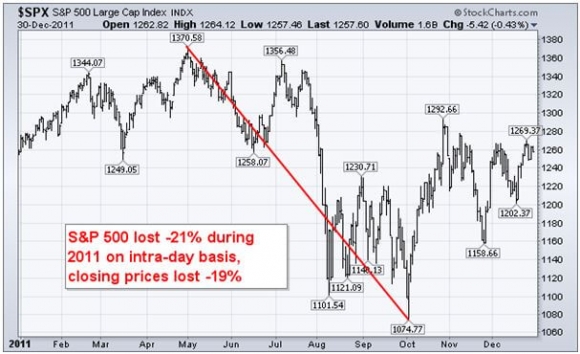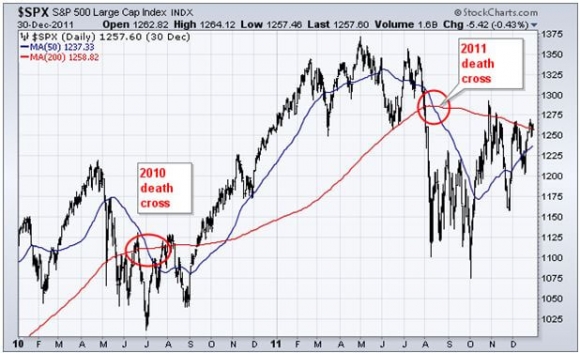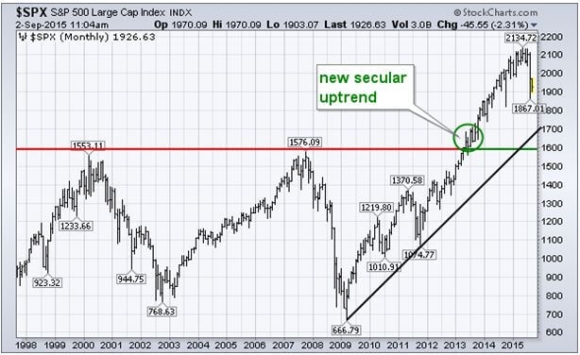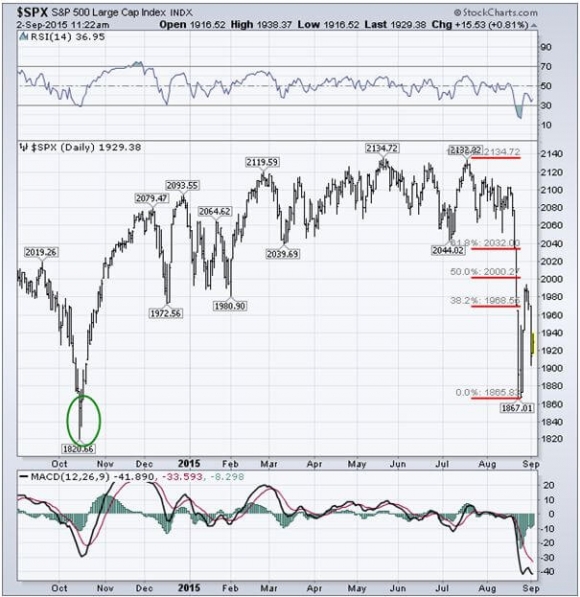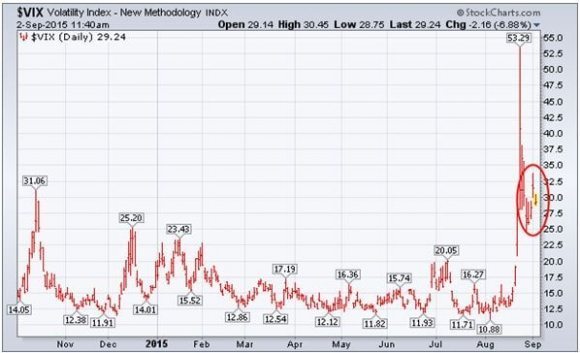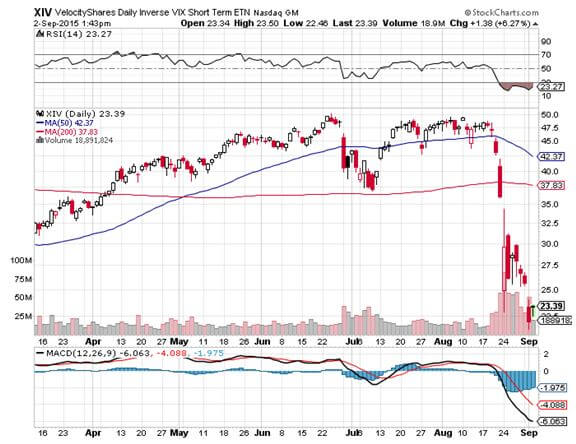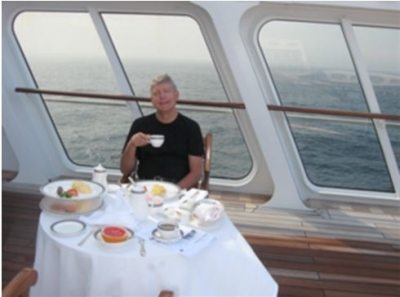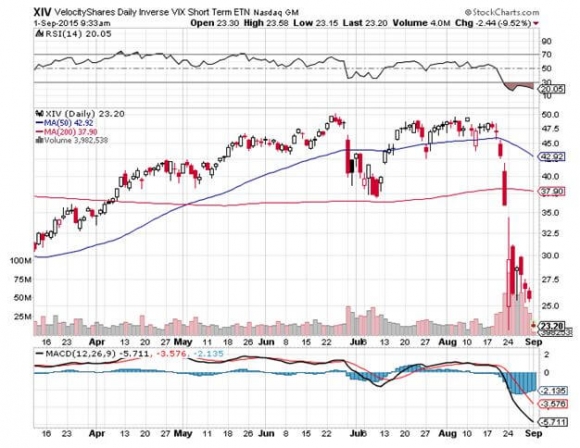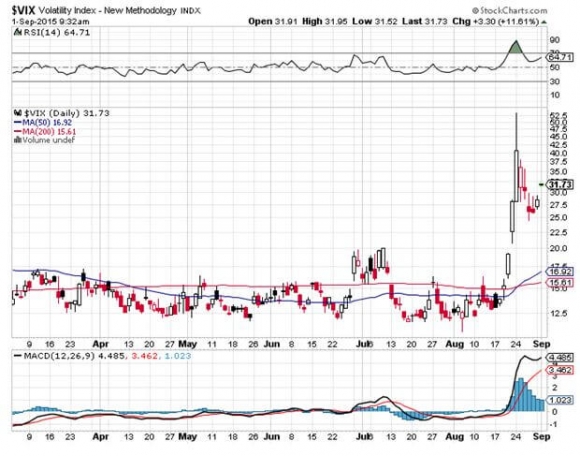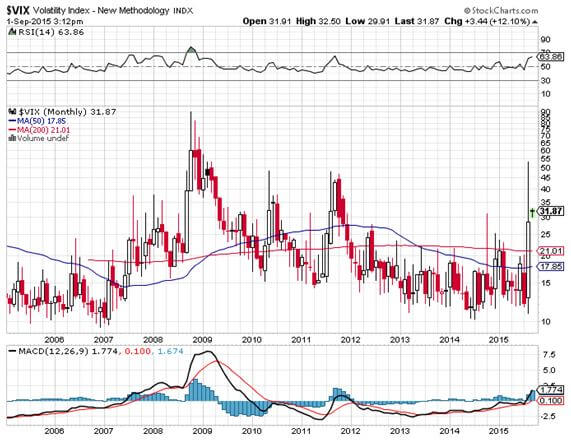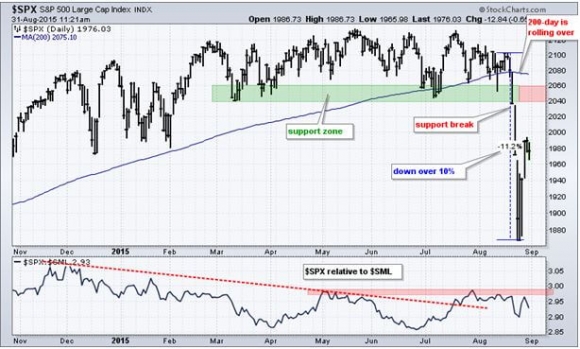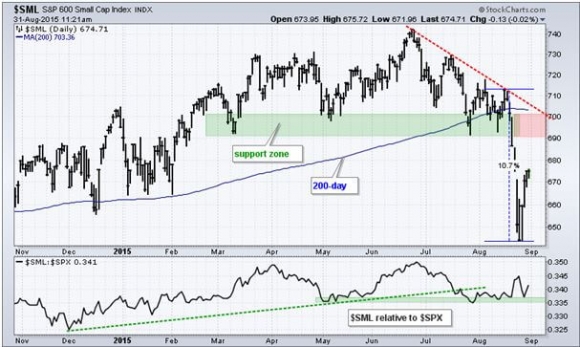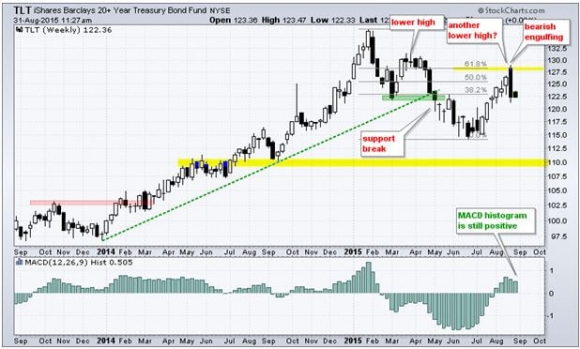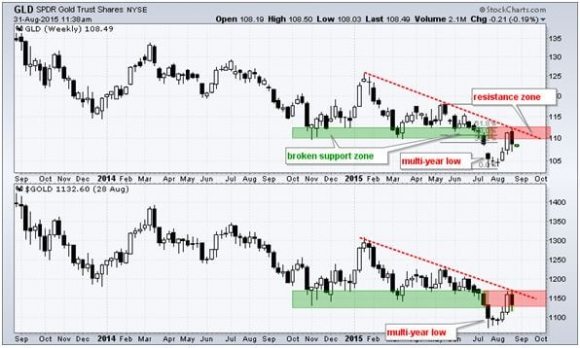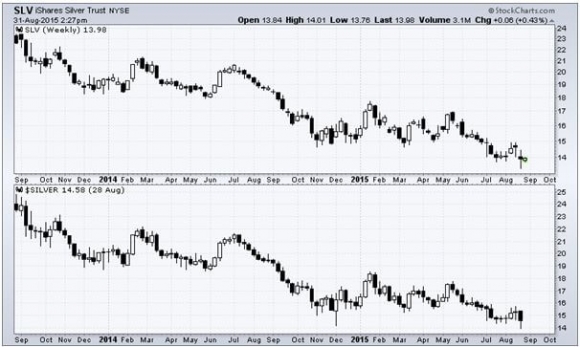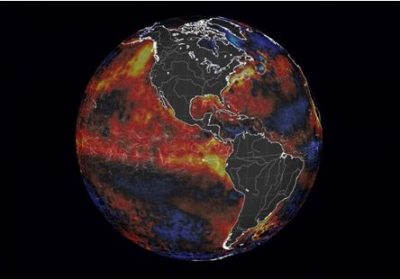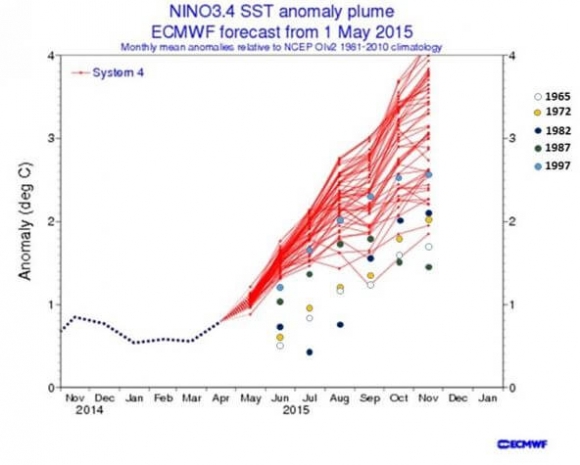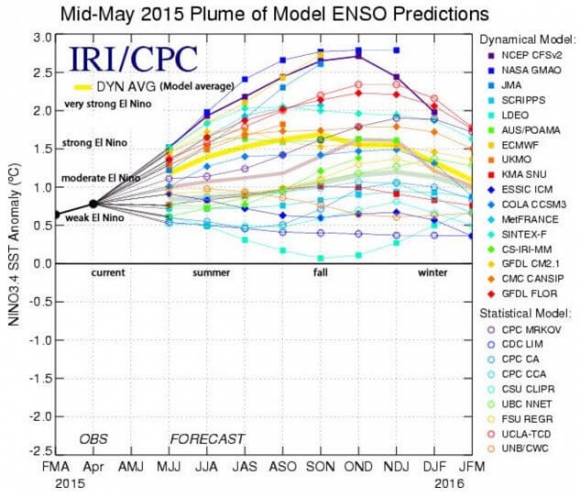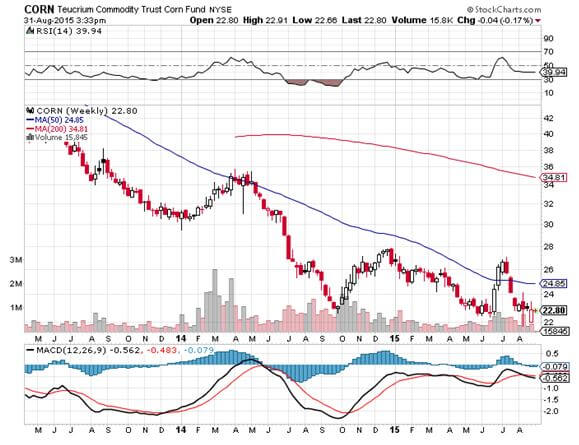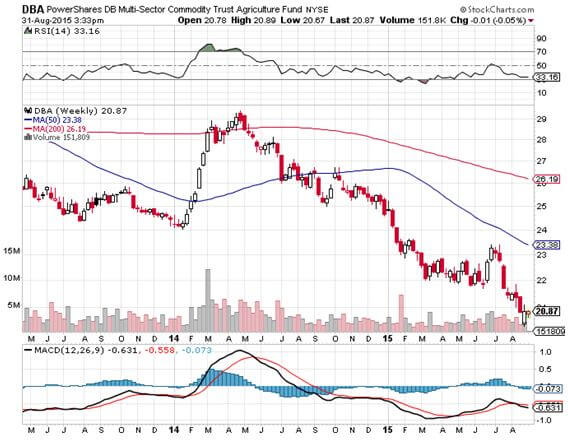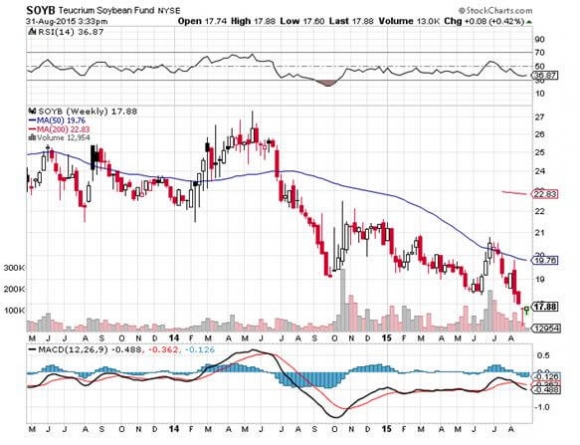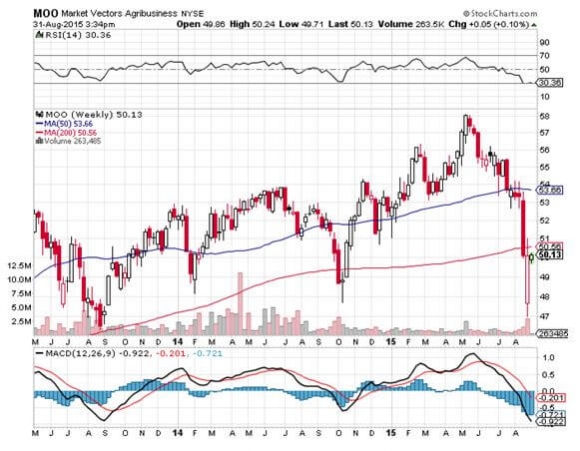Global Market Comments
September 4, 2015
Fiat Lux
Featured Trade:
(SEPTEMBER 9 GLOBAL STRATEGY WEBINAR),
(BLAME IT ALL ON THE RISK PARITY TRADERS!),
(VIX), (SPY), (TLT),
(THE BEST TESTIMONIAL EVER)
VOLATILITY S&P 500 (^VIX)
SPDR S&P 500 ETF Trust (SPY)
iShares Trust - iShares 20+ Year Treasury Bond ETF (TLT)
Global Market Comments
September 3, 2015
Fiat Lux
Featured Trade:
(WILL THE MARKETS BOTTOM TOMORROW?),
(SPY), (IWM), (QQQ), (VIX), (XIV),
(THE GREAT SOCIAL SECURITY MARRIAGE BENEFIT YOU?VE NEVER HEARD OF)
SPDR S&P 500 ETF (SPY)
iShares Russell 2000 (IWM)
PowerShares QQQ Trust, Series 1 (QQQ)
VOLATILITY S&P 500 (^VIX)
VelocityShares Daily Inverse VIX ST ETN (XIV)
Let the healing process begin!
Having just barely missed tickling a new all time high in early August at $214, then tagging a cataclysmic low at $186 on August 24, the market has defined the range that it will settle into for the next 4-6 weeks.
What then follows are a series of lower highs and higher lows to create a rightward pointing apex of a triangle on the charts. This also will cause volatility (VIX) to bleed off substantially.
This scenario leads to a final upside breakout in October. You can bet the ranch on that.
Yesterday?s successful test of the low end of the range only gives further credence to this analysis.
To prove that history not only repeats itself, it hums, whistles, and rhymes, look at the charts below for the last major low in 2011 so eloquently produced by my friends at Stockcharts.com.
Expect an encore of this performance.
I am not so confident of this prediction because I am cocksure, presumptuous, or full of hubris.
Ever the mathematician (with many thanks to John Nash, Fisher Black, Myron Scholes, and Edward Lorenz), I simply point to the numbers 3.7, 5.3, 18, 10, 40, 15, 13.5.
What, you don?t recognize these digits? Pshaaaw! They should be at the tip of your tongue.
Let me inform you.
3.7% was the blistering US Q2 GDP growth.
5.3% is the latest headline unemployment rate, a decade high.
18 million is annual sales rate the American auto industry headed for.
10 is the number of years since we have seen new housing starts that were this hot.
$40 a barrel means the global energy tax cut is increasing.
15 was the 2015 S&P 500 earnings multiple at the August $186 low.
13.5 was the 2016 S&P 500 earnings multiple at the August $186 low.
What all of these mean is that the summer swoon in share prices is purely a stock market only event. It is not at all justified by the hard data spewing out of the economy, which is strengthening by the day.
Markets behave rationally most of the time, moving based on their underlying fundamentals. But occasionally they go crazy, and emotion, superstition, and folk economics take over.
This is one of those crazy times.
And like any errant child who suddenly throws a temper tantrum at the shopping mall, the best thing to do is ignore it.
If you embarked on the Queen Mary 2 100 day Around the World cruise in early August, as many of my readers are prone to do, thanks to my many postings from the fabulous Cunard ship, and didn?t come home until November, I doubt they would find any change in share prices.
They would think it was just another boring autumn.
I am sorry to have to delve into the mumbo jumbo of all these technicals after spending nearly a decade training you that fundamentals rule all.
But in insane conditions like these, technicals take the lead.
You can see this in how the indexes perfectly test, pivot, and reverse around key Fibonacci numbers (click here for ?My Old Pal, Leonardo Fibonacci).
So if you are a long-term investor, just turn off your TV, send all that dubious stock research to your spam folder, and take the above mentioned cruise.
In the long-term scheme of things, the current market sturm und drang will amount to absolutely nothing.
If you?re a short-term trader, keep you head low and you positions small, as I have done. Live to fight another day.
It also might be a good time to sell short volatility (VIX), (XIV), which I did on Tuesday.
After a few heart stopping hours, the (VIX) has plunged from $32 to $27, and I am already well in the money.
 It?s a Great Time to Take a Long Cruise
It?s a Great Time to Take a Long Cruise
Global Market Comments
September 2, 2015
Fiat Lux
Featured Trade:
(BETTING ON FALLING VOLATILITY),
(SPY), (XIV), (SVXY), (VIX), (VXX),
(THE BLOCKBUSTER READ IN THE HEDGE FUND COMMUNITY)
SPDR S&P 500 ETF (SPY)
VelocityShares Daily Inverse VIX ST ETN (XIV)
ProShares Short VIX Short-Term Futures (SVXY)
VOLATILITY S&P 500 (^VIX)
iPath S&P 500 VIX ST Futures ETN (VXX)
I?m betting that sometime in my life, the Volatility Index (VIX) will trade below today?s $31. In fact, I expect it to trade back to the mid teens within the next two months.
After spending years stuck in the $12-$15 range, it is nothing less than mind blowing to see it spike up to $31 this morning.
However, it hit $53 at the opening of the August 24 flash crash, albeit briefly. And we rocketed all the way up to an eye popping $89 at the bottom of the 2008-2009 crash.
I am not calling the bottom of the stock market here, nor a top in volatility. Those could be days, weeks, or even months away.
What I am saying is that I expect the (VIX) to return to the mid teens by November 1, when stocks begin a six month period of seasonal strength.
When the bottom does come, you will see it in one of those screaming, up 400-point market openings that are impossible to get into.
That?s why I?m buying the Velocity Shares Daily Inverse VIX Short Term ETN (XIV) now. You may have to take some heat for the short term, but it will be richly rewarding for the long term.
To make it easy, I am avoiding the 2X and 3X short volatility ETN?s out there, as well as the options market. That way, you don?t have to fight against the clock.
Get the (VIX) back to the mid teens, and the (XIV) should double in value.
If I?m wrong, and the (VIX) stabilizes in the low twenties, where it lived from 2009-2011, then I?ll only be half wrong, and the (XIV) will strap on a mere 50%.
I?m sure you?ll take that gift all day long.
This is a rare opportunity for you to join almost every trader in Chicago on the short side in the (VIX) trade. You have just been adopted by a new rich uncle.
This is because the natural state is for volatility to fall, which it spends 90% of the year doing. The current 30-day historic volatility for the S&P 500 is only 23%, and includes the horrific 1,100 down day we saw on August 24th.
The CBOE Volatility Index (VIX) is a measure of the implied volatility of the S&P 500 stock index.
You may know of this from the many clueless talking heads, beginners, and newbies who call this the ?Fear Index?.
Long-term followers of my Trade Alert Service profited handsomely after I urged them to sell short this index three years ago with the heady altitude of 47%. We kept rolling positions down all the way down to the $11 handle.
For those of you who have a PhD in higher mathematics from MIT, the (VIX) is simply a weighted blend of prices for a range of options on the S&P 500 index.
The formula uses a kernel-smoothed estimator that takes as inputs the current market prices for all out-of-the-money calls and puts for the front month and second month expirations.
The (VIX) is the square root of the par variance swap rate for a 30 day term initiated today.
To get into the pricing of the individual options, please go look up your handy dandy and ever useful Black-Scholes equation. You will recall that this is the equation that derives from the Brownian motion of heat transference in metals.
Got all that?
For the rest of you who do not possess a PhD in higher mathematics from MIT, and maybe scored a 450 on your math SAT test, or who don?t know what an SAT test is, this is what you need to know.
When the market goes up, the (VIX) goes down. When the market goes down, the (VIX) goes up. End of story.
Class dismissed.
The (VIX) is expressed in terms of the annualized movement in the S&P 500, which today is at 1,800. So a (VIX) of $14 means that the market expects the index to move 4.0%, or 72 S&P 500 points, over the next 30 days.
You get this by calculating $14/3.46 = 4.0%, where the square root of 12 months is 3.46. The volatility index doesn?t really care which way the stock index moves. If the S&P 500 moves more than the projected 4.0%, you make a profit on your long (VIX) positions.
Probability statistics suggest that there is a 68% chance (one standard deviation) that the next monthly market move will stay within the 4.0% range.
I am going into this detail because I always get a million questions whenever I raise this subject with volatility-deprived investors.
It gets better. Futures contracts began trading on the (VIX) in 2004, and options on the futures since 2006.
Since then, these instruments have provided a vital means through which hedge funds control risk in their portfolios, thus providing the ?hedge? in hedge fund.
Buying (VIX) is the only way the vast majority of traditional long only mutual funds can profit in falling markets. This is why the (VIX) gets temporarily bid up to such insane levels.
Their error is your gain.
Therefore, if you sell short the (VIX) here at $31 via the (XIV) you are picking up a derivative at a nice artificially overbought level.
Only prolonged, ?buy and hold? bull markets see volatility stay under $14 for any appreciable amount of time.
That?s probably what were still in, once the world gets it head screwed on right again and current bout of volatility subsides.
For a detailed description of this 1X short volatility ETN please click here for the issuer?s website at http://www.velocitysharesetns.com/xiv.
 I Bet the Next Move is Down
I Bet the Next Move is Down
Global Market Comments
September 1, 2015
Fiat Lux
Featured Trade:
(THE BEAR MARKET THAT ISN?T),
(SPY), (INDU), (IWM), (GLD), (SLV)
(HOW AN EL NINO WINTER WILL AFFECT YOUR PORTFOLIO),
(CORN), (SOYB), (DBA), (MOO)
SPDR S&P 500 ETF (SPY)
Dow Jones Industrial Average (^DJI)
iShares Russell 2000 (IWM)
SPDR Gold Shares (GLD)
iShares Silver Trust (SLV)
Teucrium Corn ETF (CORN)
Teucrium Soybean ETF (SOYB)
PowerShares DB Agriculture ETF (DBA)
Market Vectors Agribusiness ETF (MOO)
It is often said that the stock market has discounted 18 out of the last six recessions.
It has just discounted one of those non-recessions.
The furious, violent, gut-wrenching 3,000-point nosedive we suffered in the Dow Average during August 19-24 essentially amounted to an entire bear market on its own.
Could the market be discounting a Trump presidential win?
Yikes!
What left long time market observers even more perplexed, befuddled, and confused was to see the average claw back 1,500 points of this loss in a mere two days. Blink, and you missed it.
After crashing down, the stock market then crashed up, or un-crashed.
Maybe this is the way the world is now, thanks to Internet trading and high frequency traders? Two years of trading compressed into a week? Now we know what happens when they don?t unplug their machines.
In a heartbeat, all 19 presidential contenders blamed President Obama for the melt down, the inevitable consequence of his failed economic policies. So did he get credit for the rally that followed? Or the six-year bull market that preceded?
I don?t think so.
Of course, the President is clueless about the reasons for stock moves, be they up or down. They are simply not of his world.
I think it is safe to say that having enjoyed years of single digit volatility and double-digit returns for years, we now may have a period in front of us of double-digit volatility and single digit returns.
That?s fine with me, as long as I know what the new game is.
One thing I can absolutely assure you of is that there is no recession to be seen anywhere on the horizon.
It is not unusual to see bear markets without accompanying recessions, especially six years into the current cycle.
Historically, bear markets outnumber recessions by three to one. You don?t get real, down and dirty, prolonged bear markets without recessions, just brief trading corrections.
With the plethora of positive economic data splayed out before me, it is impossible to believe that the awful price action will last more than a few more weeks or months.
I?m sorry, but 3.7% quarterly GDP growth, what we saw in the quarter just closed, is just not what truly ursine trading conditions are made of. The bear is just stopping by for a nibble. He is not here for a ten course, non-vegetarian feast.
There are some target dates for the end of the current bout of volatility to keep in mind.
A big one is the Federal Reserve September 17 meeting, when my friend Janet decides whether to raise interest rates by a pittance of ?%, or wait three more months. Sorry, no hints here.
A second is November 1, when we leave the traditional October stock market crashes behind us and enter what has for the last 70 years been six months of seasonal strength.
I truly believe that bull market has at least three years to run, and possibly more, before it gets euthanized by a real recession.
This is the prediction that I have been hammering away at listeners with at my many speaking engagements, webinars, and global strategy luncheons all year.
S&P 500 earnings just plunged from a 17.5X earnings multiple for 2015 earnings and 15.5 times 2016 earnings, valuation that are OK.
At the Monday, August 24 lows they plunged to 15 times 2015 earnings and 13 times 2016 earnings. In a zero interest rate world that is a hell of a return.
This is why prices snapped back so fast. More would have bought if they had been fast enough. Remember, most institutions move at a glacial pace compared to us traders.
There are only four possible causes of a recession from here:
1) Corporate earnings fall. But they are in fact increasing at a respectable pace.
2) Stocks become overvalued. However, 13X is in the bottom end of its historic earnings multiple range. Many of the largest firms are trading at big market discounts. Apple (AAPL) is the prime example, is the most widely owned stock in the world, and sells at a very modest 9X current cash earnings.
During the 2000 dotcom bubble top, Apple sold for 34X earnings (which today would value the company at a staggering $2.4 trillion, or 14% of US GDP!).
3) A hostile Federal Reserve would certainly take the punch bowl away. With deflation running amok globally, it is unlikely that the Fed moves this year. When they do, the action will be barely imperceptible.
4) A geopolitical crisis would certainly throw a spanner in the works. These are un forcastable, and all the current ones (ISIS, Iran, Syria, Afghanistan, and the Ukraine) are inconsequential.
Bear markets don?t arise from an immaculate conception, but a visible turn in the economic data flow. Given that, of the hundreds of data points I track on a weekly or monthly basis, not a single one is pointing towards recession.
That said, the market historically peaks an average of seven months before every recession. Stock markets also rise an average of 30 months after the first Fed rate hike, taking in a typical 9.5% in the first year, which brings us to my three year upside target.
Don?t get too excited. The 20% annual gains seen over the past three years are now firmly in the year view mirror. The years ahead are more likely to bring a couple of yards forward and a cloud of dust, much like we have witnessed so far in 2015.
I am urging clients to take the most negative stance possible regarding their bond holdings. That means shorting duration (maturities), and moving up the credit curve. Shorter and safer is the way to go.
Avoid junk bonds like the plague, which until recently, were among the most overvalued in history.
A 2% GDP growth rate and a 2% inflation rate should give us a 4% yield on ten year Treasury bonds, not the lowly 2.17% we see on our screens today.
Look out below!
Where do we hide out in the meantime?
At long, long, last gold (GLD) and silver (SLV) appear to have returned from the dustbin of history and regained their flight to safety bid.
I think it is more about the enormous short covering rally going on in oil USO), which is dragging up commodities of every color.
But hey, a bid is a bid!
 A Nibble is Better Than a Bite
A Nibble is Better Than a Bite
There is enormous excitement among climate scientists these days, and it has nothing to do with global warming.
Sophisticated computer models say there is a 50/50 chance that the coming winter will be driven by the El Ni?o effect. It could hit as early as September.
The potential consequences for your trading and investment portfolio are huge.
The Australian Bureau of Meteorology (http://www.bom.gov.au/climate/enso/) has even gone as far as to predict that this will be a very big El Ni?o year, the kind that occurs only twice a century. The last two major events occurred in 1982-1983 and 1997-1998.
That emergency caused $550 million worth of damage in California alone.
These tumultuous weather events are caused by a differential in Pacific Ocean temperatures off the west coast of South America, in what is called the ?El Ni?o Southern Oscillation Zone.?
A weak event is triggered by temperatures 0.5-0.9 degrees centigrade more than average, a moderate one 1.0-1.4 degrees warmer than average, and a very strong event more than 2 degrees above average. As of May 12, the temperature was 1.2 degrees above average and rising.
The implications of an El Ni?o winter are global in scale.
Australia will almost certainly face a severe drought, destroying much of the grasslands on which the nation?s livestock industry depends.
You can also expect the wheat crop there to fail, as irrigation is rarely used in Australia to cut costs.
Southeast Asia will also be dry, damaging rice production in Thailand, the world?s largest exporter. Sugar will also take a hit.
The drought could extend to India, reducing crops for grain, rice, sugar, and cotton. As Indian incomes fall, the gold market could be impacted, as the country is the largest buyer of the precious metal.
El Ni?o also decimates the annual anchovy catch in South America, which competes in the international markets with soybean meal.
El Ni?o?s bring mosquito booms and the diseases they cause, bringing sudden epidemics for Malaria and Dengue fever. If you?re headed to Latin America this year, be sure to get your shots and take your pills.
It is estimated that the 1998 El Ni?o caused 16% of the planet?s coral reefs to die off.
The opposite effects occur in the Northern hemisphere, with El Ni?o bringing torrential downpours.
I remember the last one all too well.
In 1998, I led a troop of Boy Scout volunteers to fill sand bags to save a levee in California?s Central Valley. We returned two days later, covered from head to toe in mud and exhausted, living on granola bars.
This time around, El Ni?o would be welcomed by the Golden State with open arms, as it would bring to an end a four-year drought, the most severe in history. Everyone here is now subject to strict water rationing and hefty fines for water hogs.
Indeed, when I was recently in Las Vegas, I couldn?t help but notice that the tap water at the Bellagio Hotel had become undrinkable.
The water level in nearby Lake Mead is now so low that it has fallen below the intake pipes for the city. The hotel was unable to resupply bottled water in the shops fast enough.
For the trading universe, this could all finally bring the long bear market in agricultural commodities to an end. Whether there is too little rain, or too much, abnormal weather of any kind brings plummeting crop yields, and higher prices.
I have grown so weary of reporting new multi year lows for a whole range of prices that I have considered eliminating Agriculture section from my biweekly global strategy webinars.
Affected will be the commodity prices of corn, (CORN), wheat (WEAT), soybeans (SOYB), ag stocks like John Deere (DE), Caterpillar (CAT), Potash (POT) and Monsanto (MON), and many basket ETF?s, such as the PowerShares DB Agriculture Fund (DBA) and the Market Vectors Agribusiness Fund (MOO).
The term ?El Ni?o? translates from Spanish as the ?Christ Child?. It is so named because the event was first discovered in South America just before Christmas about 50 years ago.
They have been occurring throughout human history. The crop failures they brought are thought to be responsible for the collapse of several pre Columbian civilizations. One historian even posits that it was a major cause of the French Revolution in 1789.
El Ni?o?s are also legendary for bringing enormous snowfalls in the High Sierras during the winter. While a student, I was working a part time job at the Mammoth Mountain ski resort in California when a legendary one hit in 1968.
An incredible 35 feet of snow fell in one weekend. Entire buses were buried and lost in the storm. I spent a week helping trapped people dig out from that one.
There is one big catch to all of these prognostications, as there always is. El Ni?o winters have been predicted in the past and not shown up, most recently two years ago. After all, models are just models, not certainties.
Betting on the weather can be hazardous to your wealth.
Besides the trading opportunities, an El Ni?o would make the coming ski season up here at Lake Tahoe look pretty good. I am shopping for new equipment already.
 Looks Like Rain to Me
Looks Like Rain to Me
 Did I Hear ?El Ni?o??
Did I Hear ?El Ni?o??
Global Market Comments
August 31, 2015
Fiat Lux
Featured Trade:
(OCTOBER 12 PORTLAND, OREGON GLOBAL STRATEGY LUNCHEON),
(THE BOND CRASH HAS ONLY JUST STARTED),
($TNX), (TLT), (TBT)
10 Year Tresury Note Yield INDX ($TNX)
iShares 20+ Year Treasury Bond (TLT)
ProShares UltraShort 20+ Year Treasury (TBT)
Legal Disclaimer
There is a very high degree of risk involved in trading. Past results are not indicative of future returns. MadHedgeFundTrader.com and all individuals affiliated with this site assume no responsibilities for your trading and investment results. The indicators, strategies, columns, articles and all other features are for educational purposes only and should not be construed as investment advice. Information for futures trading observations are obtained from sources believed to be reliable, but we do not warrant its completeness or accuracy, or warrant any results from the use of the information. Your use of the trading observations is entirely at your own risk and it is your sole responsibility to evaluate the accuracy, completeness and usefulness of the information. You must assess the risk of any trade with your broker and make your own independent decisions regarding any securities mentioned herein. Affiliates of MadHedgeFundTrader.com may have a position or effect transactions in the securities described herein (or options thereon) and/or otherwise employ trading strategies that may be consistent or inconsistent with the provided strategies.

